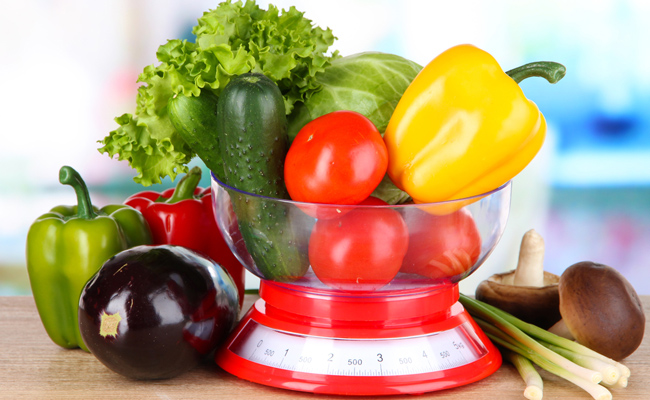
Are you thinking about trying low-carb? You already know it’s a great way to lose weight. But exactly how low is “low-carb”?
Do you have to cut out all carbs? Do you need to follow a specific diet like Atkins or Keto?
These are important questions to consider before you start your low-carb weight loss.
How “low” is low-carb?
You may be surprised, but there is no single definition of a “low-carb diet”. Technically, anything lower than the official government guidelines for daily consumption of carbohydrates is “low-carb”.
In most countries, this guideline amount is around 200-300g of carbs a day. But these recommendations are based on outdated research. Latest studies demonstrate the dangers of excessive carb consumption – especially highly refined carbs like sugar and white flour – while dietary fat has been proven innocent.
Some countries, for example Sweden, are updating their official nutritional guidance accordingly. Hopefully, we will soon see the same shift across the world.
Low-carb is a spectrum
Most popular low-carb diet plans fall somewhere between 20g-100g of carbs a day.
There is a great deal of variation within this range. Your lifestyle on 20g of carbs a day would be completely different to that on 100g a day. See our article on carb content of common foods to get a better idea about carb levels.
You can lose weight faster if you keep your carbs very low, around the bottom end of the range (20g a day). But this lifestyle requires a lot of discipline and effort. If you can do it – fantastic!
But for those who keep failing and restarting, a more liberal plan with more carbs would be better. Remember – the best diet is the one you can stick to.
Cutting out sugar, white flour and processed junk
(around 100-150g of carbs a day)
The simplest way to lower your carbs is to ditch just two foods – sugar and white flour.
They are the strongest and the nastiest diet villains. All they give you is basically empty calories. They mess with your health in many ways. And they are highly addictive – almost like class A drugs.
Most doctors agree that cutting out these two foods is a great idea. If you commit to doing that, you will also ditch junk foods and processed foods. Most of them include sugar, white flour or both. Beware the many fancy names of sugar – it tries to hide on labels.
This one simple step will cut a significant portion of low-quality carbs from your diet. You can still enjoy natural high-carb foods like fruit, tubers and whole grains.
This one change is a great start. It would definitely be good for your health. You are likely to see other immediate benefits like better digestion and more energy.
However, weight loss is not guaranteed at this level. Your carb levels would probably be still too high to make any real difference to fat burning.
Moderate low-carb diets
(up to around 100g of carbs a day)
Further down the spectrum, we have moderate low-carb diets.
They are liberal enough to include a wide variety of foods, so you won’t get bored. But carbs are lowered to the point where you can kickstart your weight loss.
The most popular diet in this group is Paleo Diet. The premise is to eat only natural wholefoods that were accessible to our ancestors in the Paleolithic era.
Paleo eliminates all processed foods, plus foods that have been over-cultivated by agriculture – for example, all grains, all legumes and white potatoes. Paleo does not specifically aim to be low-carb. But it gets there anyway due to cutting out most high-carb foods.
Other popular moderate low-carb diets are Zone Diet and maintenance stages of Atkins and South Beach.
Ketogenic low-carb diets (20-40g of net carbs a day)
Ketogenic diets sit on the lowest end of the low-carb spectrum.
On ketogenic diets, you lower your carbs to about 20g a day (30-40g for larger people and athletes). Your body enters a metabolic state called “ketosis” – it switches to burning fat as the primary source of fuel instead of glucose.
The initial adaptation period can be tough – see our article on Keto flu. But once your body adjusts, ketosis feels amazing – lots of energy, no hunger and fast weight loss.
Ketogenic diets require more discipline than more liberal low-carb diet plans. This lifestyle is dramatically different to standard diets. You would have to ditch sugar, all grains and all fruit completely. Your diet would be based on animal proteins, healthy fats, full-fat dairy and a small amount of salad vegetables.
Ketogenic lifestyle requires a lot of discipline and planning, especially in the beginning. But if you can manage it, you will see great results.
The most popular ketogenic diets are Keto and Phase 1 (Induction) of Atkins.
Zero-carb
Zero-carb is the most radical end of the low-carb spectrum – literally zero carbs. People who follow this lifestyle live on animal proteins alone: meat, eggs and dairy.
Zero-carb may sound a bit mad. But it works extremely well for some people. Apparently, it can help with certain digestive and auto-immune disorders. No scientific studies on this topic have been conducted yet. But there is a thriving community of people and plenty of anecdotal evidence that it can be a healthy and rewarding lifestyle.
Read more about zero-carb lifestyle
Dukan diet – low-fat low-carb
Most low-carb diets are high in fat, effectively replacing carbs with fat.
Dukan is quite radical in that it is both low-carb and low-fat. So you don’t get the full benefits like absence of hunger or better energy.
Dukan diet has an intricate structure with alternating days and fixed phases, to make it manageable. Although it is harder than other types of low-carb diets, many people have achieved good results on Dukan.
What’s the best diet for you?
The best diet is the one that you can sustain while losing weight.
Ketogenic diets give faster weight loss but are harder to stick to. Moderate plans are easier, but weight loss is slower.
One good way to find out your optimal level is to try a phased low-carb diet. They start at the lower end of the spectrum and gradually become more liberal.
Atkins diet – best for beginners
With this in mind, the best choice for the complete beginner is Atkins Diet.
Atkins has four phases to help you find your individual optimal low-carb level. It has a long track record of almost 50 years and millions of followers around the world.
The first phase – Atkins Induction – is ketogenic at 20g net carbs a day. Induction lasts for two weeks minimum, which gives you the chance to break the addiction to sugar and reset your metabolism.
If you find Atkins Induction easy, you can stay there for 6 months or even longer. If you find it hard, you can move on to phases 2 and 3, where you will gradually add more carbs until you find your optimal level.
Get the original Atkins Diet book on Amazon
Any questions?
Do you have any questions on choosing a low-carb diet? Please ask in the Comments section below.
